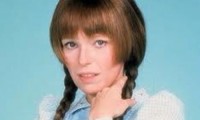The criteria for a decade’s quintessential song are specific. The song must be by a band whose only real success came in the decade in question and whose reputation has not grown in the decades since. A song by U2 is a U2 song, not an 80s song. The song itself must have been popular during that same decade, and of a style that would not have made sense or been popular in any previous decade.
The song and the band must also be, in several ways, representative or symptomatic of the era that bore them, musically or culturally. The song, though not necessarily the band, must also be good. To say “Hey Jude” is the quintessential song of the 60s is to misunderstand the notion entirely.
So picking a decade’s song takes some understanding of the decade, some sympathy for it, some empathy with it. You have to have the sort of sensibility that can tell you that despite all the signs pointing in so many other, cooler directions, the quintessential song of the 1980s is “Karma Chameleon.” You must also realize that the video is a big part of why that is true.
Culture Club, “Karma Chameleon” (1984)
Most of the rest of Culture Club’s songs are, aside from the style in which they were delivered, standard love songs of one sort or another. But “Karma Chameleon” glittered. It’s the song Culture Club was waiting for, the video they were collectively born to make; it is the band’s apotheosis.
It also makes very little sense. What is desert loving and how might it be reflected in one’s eyes? No matter, because unlike the most popular songs of the decade both before and after it, the significant hits of the 80s mostly had fairly oblique relationships to meaning, you know, qua meaning.
There’s a video somewhere, which I cannot find and the friendly people at the American National Academy of Recording Arts and Sciences cannot for legal reasons provide, of Boy George accepting the Best New Artist Grammy in 1983. “Thank you America,” I believe he said. “You have class, you have style, and you know a good drag queen when you see one.”
This was 1983 you’ll recall. AIDS was first noticed in June, two years earlier. People were still calling it GRID as Boy George took the stage, not only gay but a drag queen, not only a drag queen but a drag queen with dreds, not only a drag queen with dreds but a drag queen with dreds who was over 6 feet tall and about half as broad.
This was the moment British drag stopped being an old-boy joke, a tradition David Bowie had tapped into (rather unsubversively, all things considered), and became something a good deal more incriminating.
“Boy George Lookalike Competition, Sydney” (1984)
This was also to become one of only two iconic looks the decade threw up, the other being Madonna and Cyndi Lauper’s junk-store layering. Boy George was what all those New Romantics like the Rhodes brothers were playing at. His makeup and outfits were signifiers, not teases. And listen to their discography — is there a feminine pronoun in there anywhere?
Though the gays themselves probably had more fun the decade before, the 80s were gayer. It was the decade when gay’s shit hit the fan, when anal sex and swallowing semen made it to the covers of Maclean’s and Time, Rock Hudson and Freddie Mercury finally came out (albeit at the last possible moment) and Elizabeth Taylor coined the phrase “Some of my best friends are gay” and moved her iffy nation away from internment camps and towards AmFAR.
Old violet eyes may have won her homos sympathy, but George won a generation’s teeny-pop admiration. “Do You Really Want to Hurt Me” was a shock, “Church of the Poison Mind” was a come-on, but “Karma Chameleon” was the act itself.
Look at him there, on the Mississippi and perhaps even in Mississippi, in 1870, entertaining the crowds while Reagan and Thatcher fleece them.
No? Look at him there, doing those feline, serpentine moves of his, wearing a rainbow-coloured necklace made of pom-poms, embodying the connection between the outsider sexuality of African-Americans of the Old South with his own, reaching back into the roots of rock to serve himself up as its natural evolution.
No? OK, you’re probably right, it’s as meaningless as the lyrics. But really, look at him there, giving a performance that would have been utterly unthinkable before the very moment you saw it for the first time in 1984, sounding like no one else, looking like no one else (unless you believe Pete Burns).
BBC, “Pete Burns Interview”
No one would have put up with Boy George in 1976 (as Peter Burns can tell you), and everyone would have laughed in 1995. But in 1984, it went to No. 1 in 16 countries, Canada, the US and the UK included. The singles that preceded it on the Canadian, UK and US charts, Peter Schilling’s “Major Tom,” “Red Red Wine” by UB40 and “Owner of a Lonely Heart” by Yes, respectively, would have, and in Schilling and UB40’s case did, fit quite nicely previous decades, but Karma Chameleon is pure 80s, and shines all the brighter for it.
– Bert Archer







